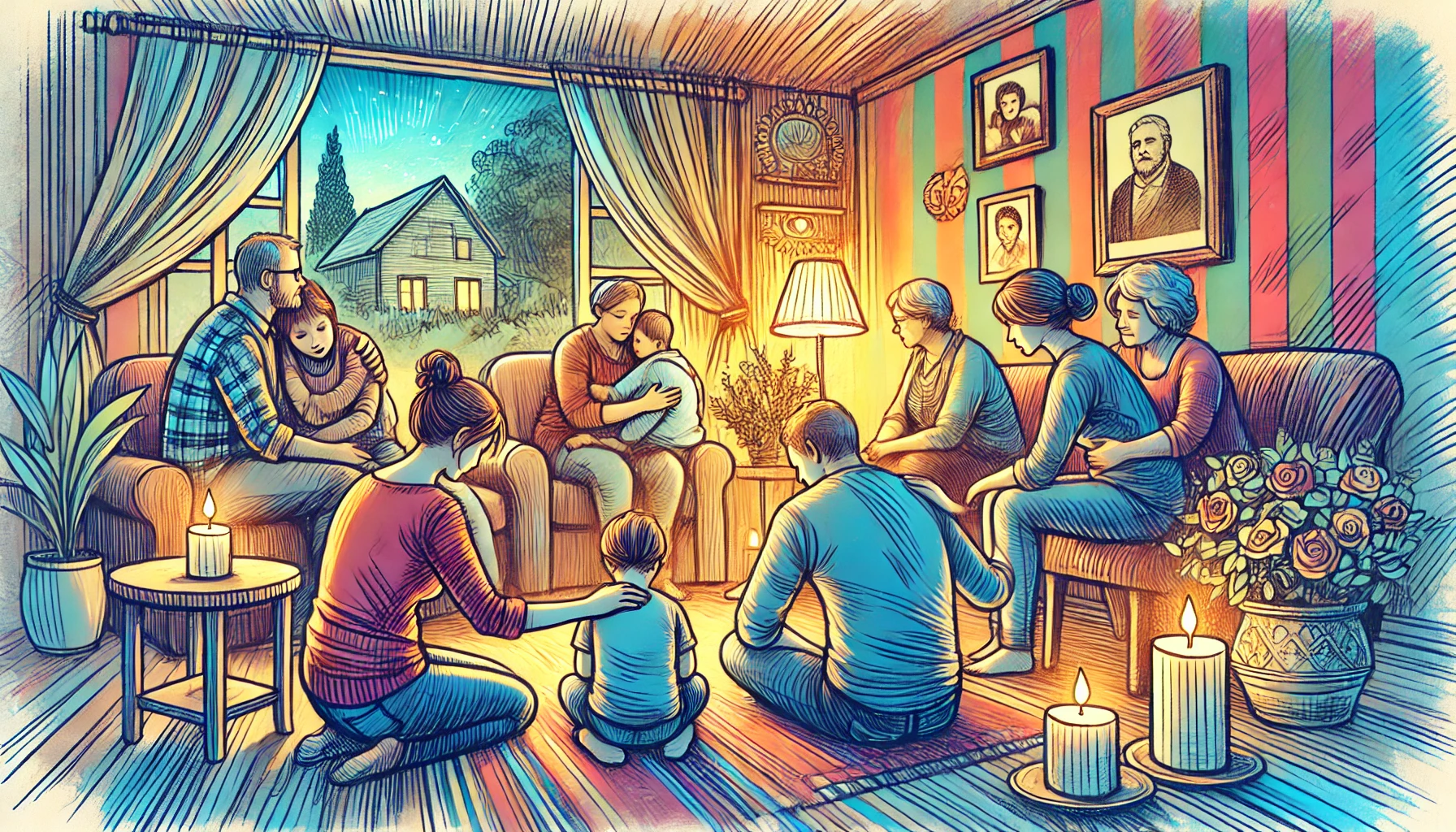Grieving the loss of a family member is a profoundly challenging experience, and supporting each other through this difficult time can provide comfort and strength. Grief affects everyone differently, and having a supportive network of family and friends can make the journey less isolating. When family members come together to share their pain, offer comfort, and navigate their emotions collectively, they can foster a healing environment that promotes resilience and recovery. Here are key strategies for supporting each other through grief.
1. Communicate Openly
- Encourage open and honest communication among family members. Share your feelings, thoughts, and memories of the loved one.
- Create a safe space for everyone to express their emotions without fear of judgment or criticism.
- Listen actively and empathetically, validating each other’s feelings and experiences.
- Avoid minimizing or dismissing anyone’s grief, as everyone processes loss differently.
- Regular family meetings or informal check-ins can help maintain open lines of communication.
2. Offer Practical Support
- Help with daily tasks and responsibilities that may feel overwhelming during grief, such as cooking, cleaning, or running errands.
- Offer to accompany family members to appointments or provide transportation if needed.
- Assist with organizing and planning memorial services or other rituals to honor the loved one.
- Provide childcare or pet care to give grieving family members time to rest and process their emotions.
- Practical support can alleviate stress and allow family members to focus on their emotional healing.
3. Share Memories and Stories
- Spend time reminiscing about the loved one, sharing stories and memories that celebrate their life.
- Create a memory book, photo album, or digital slideshow that captures significant moments and cherished memories.
- Encourage each family member to contribute their favorite memories, photos, or mementos.
- Celebrating the loved one’s life can bring comfort and keep their memory alive.
- Sharing positive memories helps foster a sense of connection and continuity.
4. Respect Individual Grieving Processes
- Acknowledge that each person grieves differently and may need different forms of support.
- Respect individual coping mechanisms, whether it’s seeking solitude, staying busy, or talking about their feelings.
- Be patient and understanding if a family member’s grief process differs from your own.
- Avoid pressuring anyone to grieve in a specific way or timeline.
- Respecting each other’s grieving processes fosters a supportive and non-judgmental environment.
5. Create New Rituals and Traditions
- Establish new family rituals or traditions that honor the loved one’s memory, such as an annual memorial event or a special family outing.
- Incorporate activities that were meaningful to the loved one or reflect their interests and passions.
- Rituals can provide a sense of structure and purpose during the grieving process.
- New traditions help integrate the loved one’s memory into family life in a positive and meaningful way.
- Creating rituals can offer comfort and a sense of continuity for grieving family members.
6. Seek Professional Help Together
- Consider attending family grief counseling or therapy sessions to receive professional guidance and support.
- A therapist can help family members navigate complex emotions, improve communication, and develop healthy coping strategies.
- Group sessions can provide a space for family members to support each other and address shared concerns.
- Seeking professional help demonstrates a commitment to healing and supporting each other.
- Therapy can offer valuable tools for managing grief and strengthening family bonds.
7. Encourage Self-Care
- Remind each other to prioritize self-care and engage in activities that promote physical and emotional well-being.
- Encourage regular exercise, healthy eating, and sufficient rest to support overall health.
- Suggest activities that bring joy and relaxation, such as hobbies, nature walks, or meditation.
- Self-care is essential for maintaining resilience and managing the stress of grief.
- Supporting each other in self-care helps ensure that everyone’s needs are addressed.
8. Be Patient and Compassionate
- Offer patience and compassion to family members as they navigate their grief.
- Understand that grief can resurface at unexpected times and may take longer for some people to process.
- Avoid setting expectations for how someone should feel or behave during their grief journey.
- Show kindness and empathy, offering a listening ear or a comforting presence without trying to “fix” their pain.
- Patience and compassion foster a supportive and nurturing environment for healing.
9. Stay Connected
- Maintain regular contact with family members, whether through phone calls, video chats, or in-person visits.
- Check in on each other regularly to offer support and show that you care.
- Plan family gatherings or activities that bring everyone together and provide opportunities for mutual support.
- Staying connected helps prevent feelings of isolation and reinforces the family’s support network.
- Regular contact ensures that no one feels alone in their grief.
10. Honor the Loved One’s Legacy
- Find ways to honor the loved one’s legacy through acts of kindness, charitable donations, or community service.
- Engage in activities or causes that were important to the loved one, continuing their positive impact.
- Create a tribute, such as a memorial bench, garden, or scholarship, that commemorates their life and contributions.
- Honoring the loved one’s legacy can bring a sense of purpose and meaning to the grieving process.
- Acts of remembrance help keep the loved one’s spirit alive in a meaningful way.
Supporting each other through grief involves open communication, practical assistance, sharing memories, respecting individual processes, creating new rituals, seeking professional help, encouraging self-care, offering patience and compassion, staying connected, and honoring the loved one’s legacy. By coming together and providing mutual support, families can navigate the challenges of grief and find strength in their shared experiences. These strategies foster a sense of unity and resilience, helping each family member cope with their loss and heal together.

